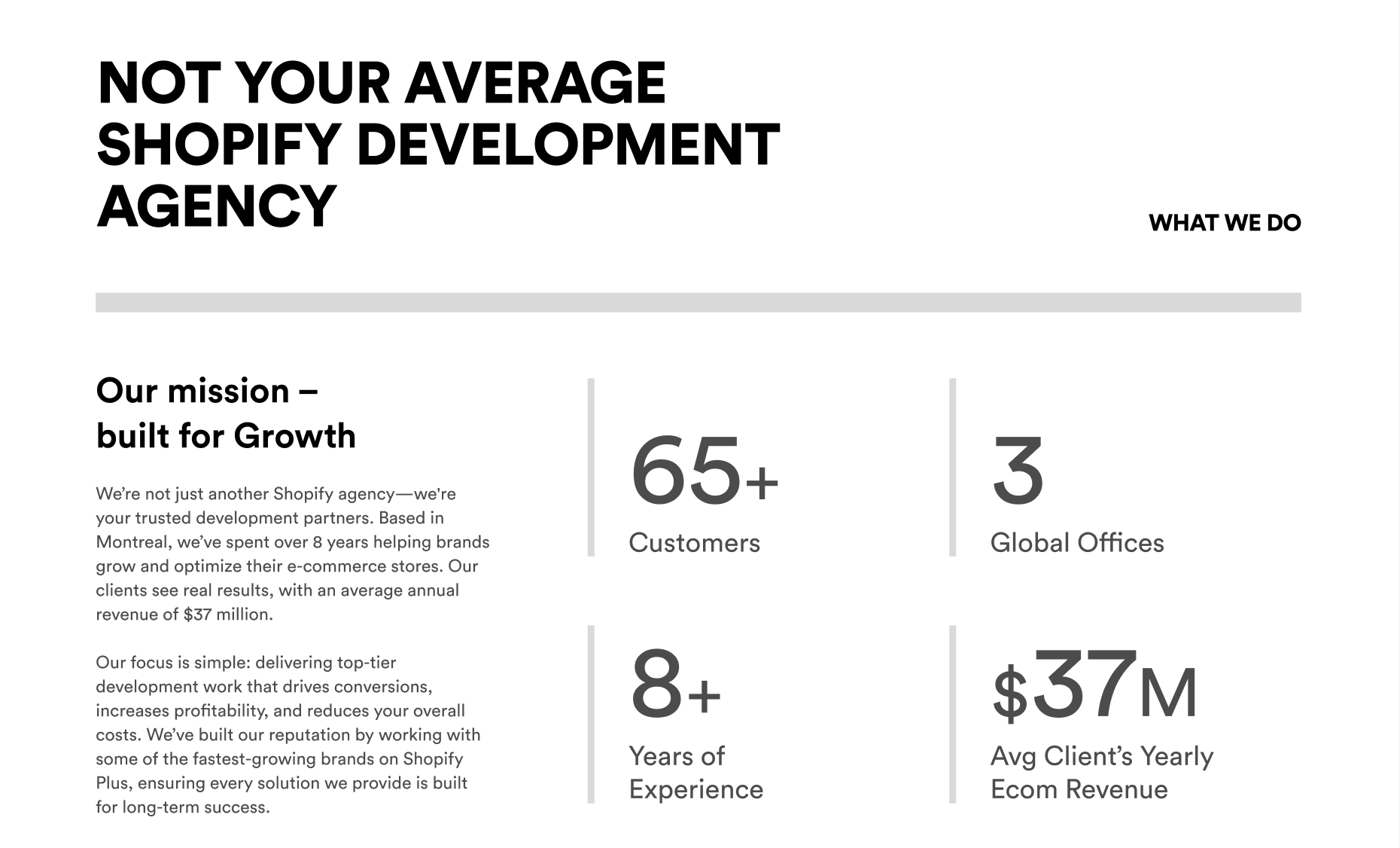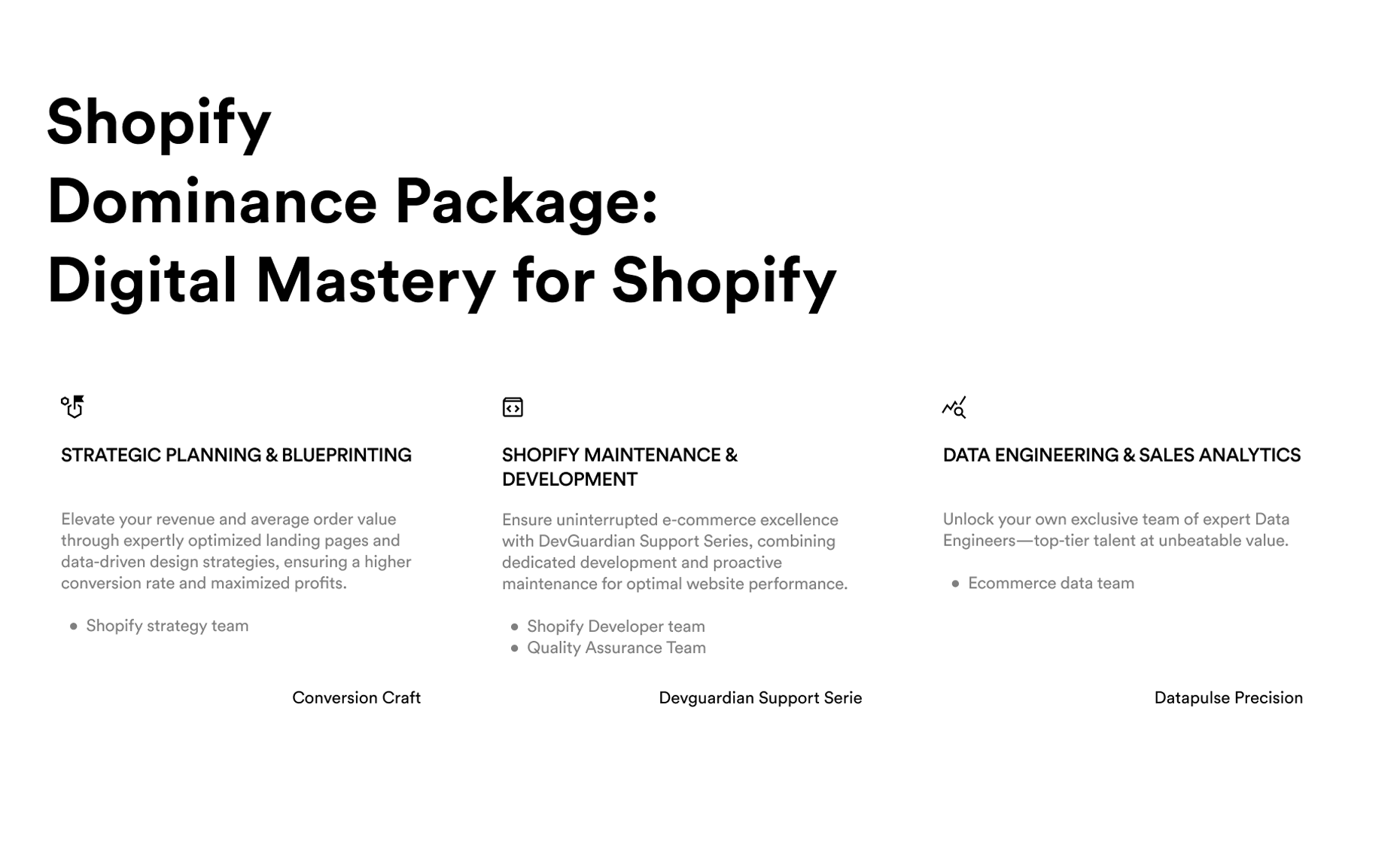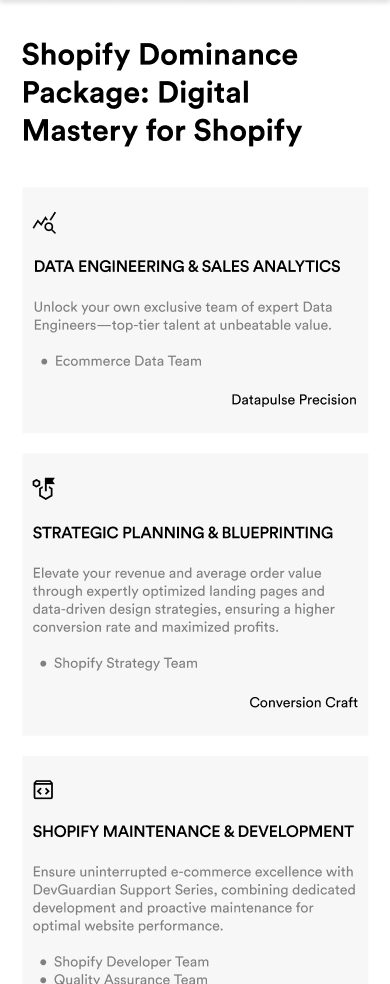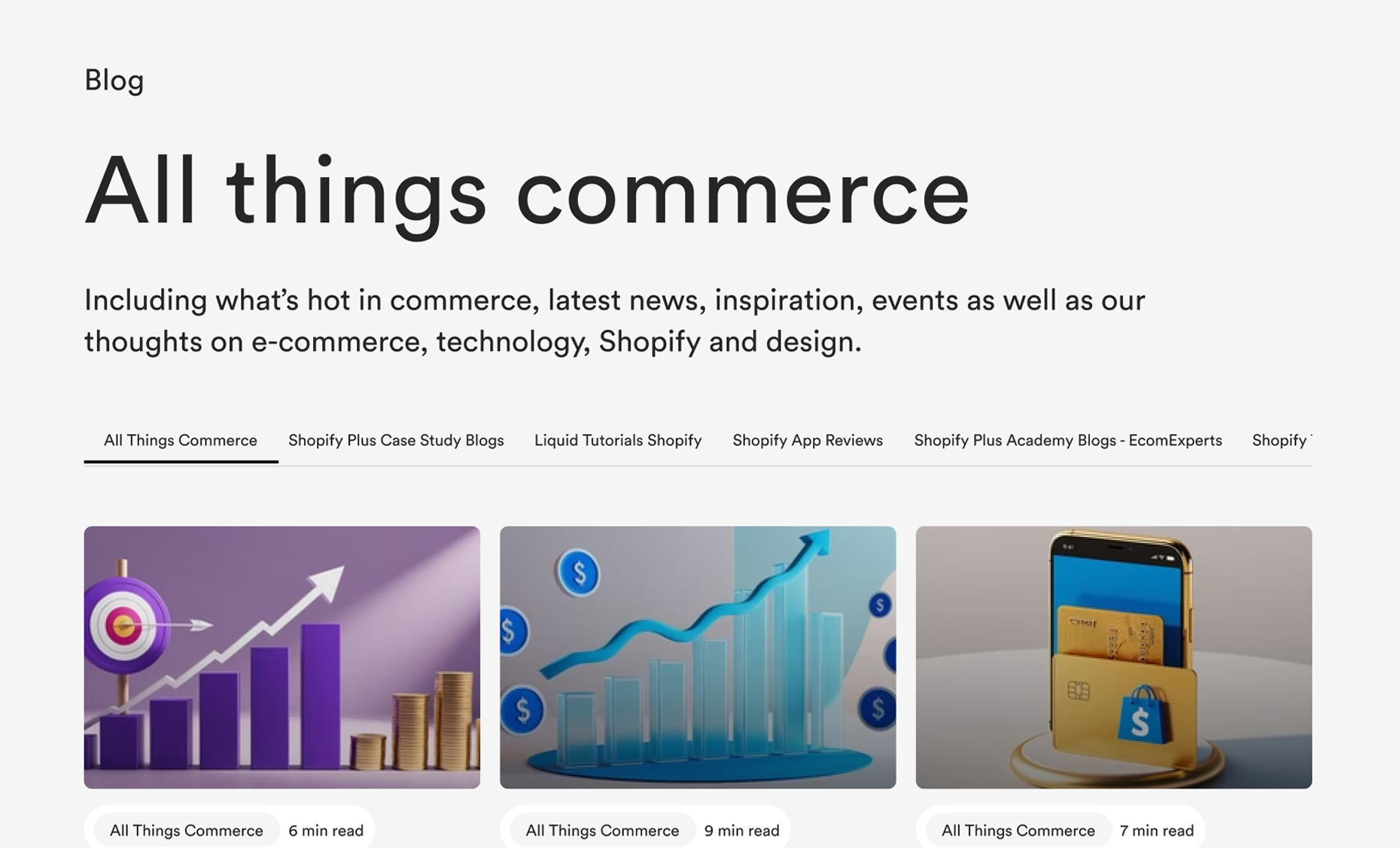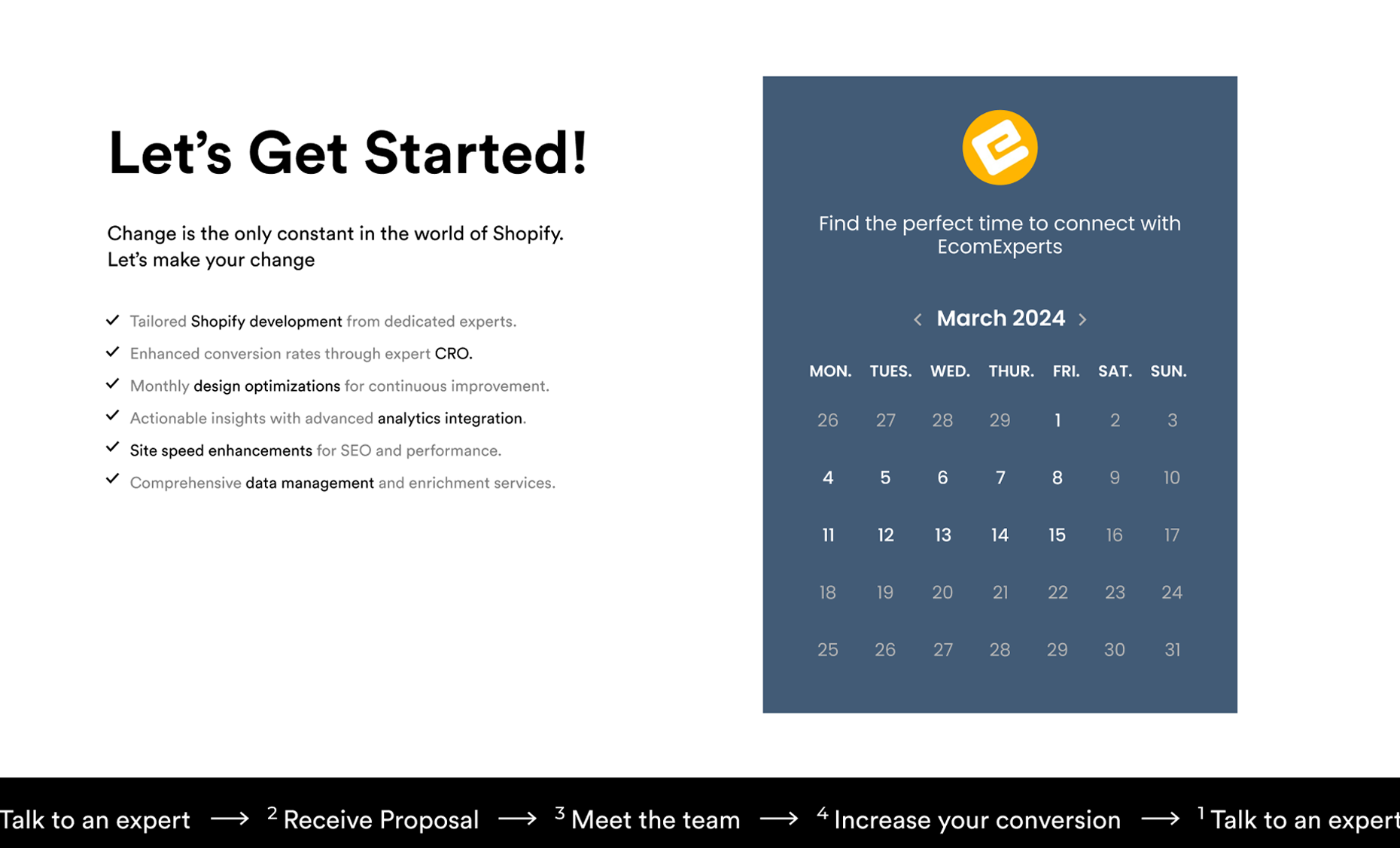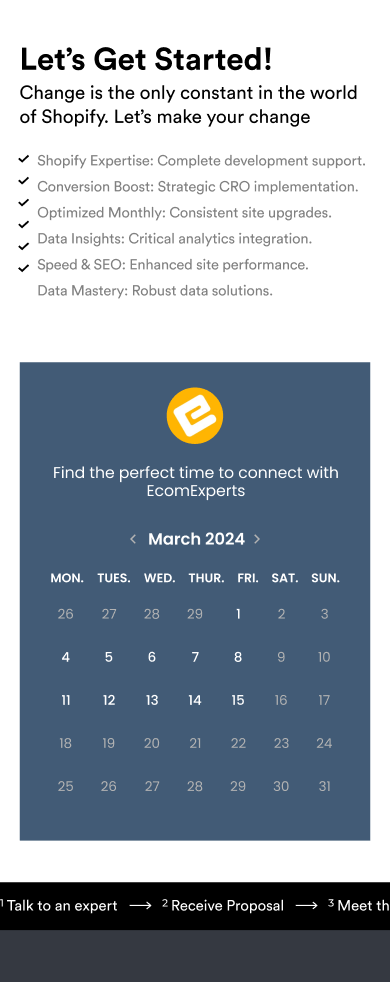Did you know that even a one-second delay in page load time can reduce conversions by 7%? In 2025, users expect instant results, and speed is a crucial factor in keeping potential customers on your site.
Shopify Speed Optimization isn’t just about improving your store’s performance; it’s also about enhancing user experience and boosting your search engine ranking. With Google’s March 2024 update focusing more on page speed and user experience, it's more important than ever to optimize Shopify speed.
This guide will walk you through the latest, most effective strategies for Shopify Speed Optimization, ensuring your store not only ranks higher but also provides a seamless experience to users.
What You'll Read In This Blog:
- Why Shopify Speed Optimization Matters
- How to Optimize Your Shopify Store's Speed
- Monitoring and Improving Shopify Store Speed Over Time
- Conclusion
- FAQs
Why Shopify Speed Optimization Matters
Shopify Speed Optimization directly influences three critical factors: user experience (UX), SEO, and conversion rates. When your Shopify store loads quickly, visitors are more likely to stay, explore, and ultimately make purchases. In 2024, with Google’s March core update focusing more on user-centric metrics such as Core Web Vitals, optimizing your Shopify store's speed has become essential for e-commerce success.
Impact on User Experience (UX)
In the fast-paced world of online shopping, user patience is thin. If a page takes longer than three seconds to load, most visitors will abandon it. Research shows that 40% of users will leave a site if it takes longer than 3 seconds to load. This not only hurts your potential sales but also negatively impacts your brand perception. Visitors are less likely to return to a store that doesn’t offer a seamless browsing experience.
By optimizing Shopify speed, you ensure that users remain engaged, spend more time exploring products, and are more likely to reach the checkout page. Faster sites contribute to reduced bounce rates, improved time on site, and increased customer satisfaction.
SEO and Google’s Core Web Vitals
In its March 2024 update, Google reinforced the importance of Core Web Vitals—metrics that measure how quickly and smoothly a webpage loads and responds to user interactions. These vitals are now significant ranking factors:
- Largest Contentful Paint (LCP): Measures how long it takes for the largest content element to load. For a good user experience, this should occur within 2.5 seconds.
- First Input Delay (FID): Measures interactivity, ensuring the site responds quickly when a user interacts with it.
- Cumulative Layout Shift (CLS): Ensures the page is visually stable and elements don’t unexpectedly shift while loading.
Sites that fail to meet these Core Web Vitals metrics face the risk of falling in rankings. For Shopify stores, slow-loading product pages or checkout processes can lead to poor rankings in Google search results, making it harder to attract organic traffic.
Conversions and Revenue
Speed optimization is directly linked to conversions. A fast-loading site not only keeps users on your page longer but also significantly boosts the likelihood of them converting into paying customers. Research has shown that even a 1-second improvement in page load time can lead to a 1.9% increase in conversions.
For instance, one of our clients, Mike’s Bikes, experienced tremendous success after implementing Shopify speed optimization strategies with Ecom Experts. By streamlining their site performance and cutting load times, Mike’s Bikes saw a 15% increase in sales within just three months. This case study is a prime example of how speed optimization can lead to both improved user experience and tangible revenue growth.
In e-commerce, speed is often the deciding factor between making or losing a sale. With more users browsing on mobile devices and with shorter attention spans, a fast-loading site is critical for retaining customers and converting them into buyers.
How to Optimize Your Shopify Store’s Speed:
These steps will help you optimize Shopify speed in 2024, ensuring a faster and more efficient store performance that aligns with the latest Google Core Web Vitals.
Here are the most effective tactics:
- Choose a Lightweight Shopify Theme
- Compress and Optimize Images
- Lazy Load Images
- Minimize Third-Party JavaScript and Shopify Apps
- Enable Browser Caching and Prefetching
- Use a Content Delivery Network (CDN)
- Migrate Tracking Codes to Google Tag Manager
- Optimize Shopify Scripts and Code
1. Choose a Lightweight Shopify Theme
Selecting the right theme is critical for Shopify speed optimization. Heavily designed themes may look attractive but can slow down your store significantly. Opt for lightweight themes such as Turbo or Flex, which are specifically optimized for speed and efficiency.
- Impact: Lightweight themes decrease load time by removing unnecessary features like animations and heavy image sliders.
- Pro Tip: Choose themes that prioritize mobile optimization, as mobile performance is a key factor in Google’s Core Web Vitals.
2. Compress and Optimize Images
Images often account for the majority of a website's data size. By compressing images, you can significantly reduce load times without sacrificing visual quality. Use tools like TinyIMG or ImageOptim to streamline your images.
- Impact: Compressed images reduce the amount of data needed to load a page, improving Largest Contentful Paint (LCP) and overall site performance.
- Tip: Compress high-resolution images such as banners, product images, and media files for optimal load times.
3. Lazy Load Images
Lazy loading defers the loading of images until they are required by the user (when scrolling down the page), reducing the initial page load time. This technique helps improve your website's First Input Delay (FID) by prioritizing essential content.
- How It Works: Lazy loading reduces HTTP requests during the initial page load, speeding up content delivery.
- Case Study: When Ecom Experts implemented lazy loading for Mike's Bikes, we reduced LCP times and saw a 15% increase in sales within months.
4. Minimize Third-Party JavaScript and Shopify Apps
Shopify stores often rely on third-party apps to enhance functionality, but too many apps can slow down your website. Regularly audit and remove apps that don’t contribute to user experience or sales conversions.
- Solution: Use Shopify Theme Inspector to identify slow-loading scripts and third-party apps that may impact speed. Disabling unused apps can cut down load times drastically.
- Impact: Reducing third-party apps enhances both FID and overall interactivity, helping maintain a smooth user experience.
5. Enable Browser Caching and Prefetching
Enabling browser caching helps store frequently accessed files, reducing load times for repeat visitors. Similarly, prefetching resources allows your website to load key assets in advance.
- How to Implement: Shopify supports browser caching and prefetching by tweaking theme liquid files or using caching plugins.
- Impact: Prefetching and caching improve Cumulative Layout Shift (CLS) by ensuring key assets are loaded early.
6. Use a Content Delivery Network (CDN)
CDNs like Cloudflare distribute your website’s content across various global servers, ensuring that users from different regions experience faster load times by connecting to the closest server.
- Why it Matters: CDNs reduce server response times, improving load times and boosting your website’s global performance.
- Pro Tip: Shopify includes its own CDN, but integrating with an additional service like Cloudflare enhances performance, especially during peak traffic.
7. Migrate Tracking Codes to Google Tag Manager
Embedding multiple tracking codes (Google Analytics, Facebook Pixel, etc.) directly into your theme can slow down page load speeds. Google Tag Manager consolidates these scripts in one place, streamlining script management and reducing server load.
- Why It Helps: Using GTM cuts down on multiple HTTP requests and speeds up the initial page load.
- Impact: Consolidating tracking codes reduces the number of direct calls to your server, improving FID and overall site speed.
8. Optimize Shopify Scripts and Code
Minifying and deferring unused JavaScript and CSS files can have a dramatic impact on your Shopify store’s performance. These unnecessary resources can delay content rendering and increase load times.
- How to Implement: Shopify allows you to minify and defer JavaScript and CSS using built-in tools or plugins, which helps eliminate render-blocking resources.
- Impact: Streamlined code ensures faster rendering times, reducing FID and improving overall site performance.
Monitoring and Improving Shopify Store Speed Over Time
Each of these tactics focuses on Shopify speed optimization while aligning with the 2024 Google updates. Implementing these strategies will ensure your store is faster, more responsive, and ranks higher, ultimately leading to better user experience and higher conversion rates.
In 2024, Shopify speed optimization is no longer just a technical concern—it’s a critical factor for your store's success. From improving user experience and SEO to boosting conversion rates, every second counts. By implementing proven strategies like choosing a lightweight theme, compressing images, lazy loading, and reducing third-party apps, you can significantly optimize Shopify speed and ensure your store is primed for growth. Continual monitoring through regular speed audits, user feedback, and load testing will help you stay ahead of potential issues, keeping your store fast and responsive.
By following the latest guidelines and strategies, your Shopify store will not only perform better but also rank higher in Google’s search results, helping you attract and convert more customers. Take the time to audit, implement, and monitor these optimizations, and you’ll see both immediate and long-term benefits for your business.
For personalized Shopify speed optimization tailored to your specific needs, get in touch with Ecom Experts today!
FAQs
Q1. Why is Shopify speed optimization important?
A1. Shopify speed optimization is crucial because it directly impacts user experience, search engine rankings (SEO), and conversion rates. Faster sites keep users engaged, reduce bounce rates, and increase the likelihood of conversions. Speed is also a ranking factor in Google's algorithm, making it essential for visibility in search results.
Q2. How can I check the speed of my Shopify store?
A2. You can check your Shopify store's speed using tools like Google PageSpeed Insights, GTmetrix, or Google Lighthouse. These tools provide performance scores and suggestions for improvement, such as optimizing images or reducing third-party scripts.
Q3. What are some effective ways to speed up my Shopify website?
A3. To improve your Shopify store's speed, you can:
Use a lightweight theme.
Compress and optimize images.
Lazy load images.
Limit the use of third-party apps and scripts.
Enable browser caching and prefetching.
Use a Content Delivery Network (CDN).
Q4. How does Shopify speed affect SEO rankings?
A4. Google considers page speed a key ranking factor, especially after its March 2024 update, which places greater emphasis on Core Web Vitals such as Largest Contentful Paint (LCP), First Input Delay (FID), and Cumulative Layout Shift (CLS). Faster Shopify stores are more likely to rank higher in search engine results, leading to better visibility and more organic traffic.
Q5. Can too many Shopify apps slow down my store?
A5. Yes, excessive use of Shopify apps can slow down your store by adding extra scripts and external resources. It's important to regularly audit your apps and disable or remove those that are not essential to your store's functionality.




